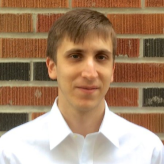Outside of the Rockies Mountains, most of the snowfall in the United States, as well as a significant portion of the snow that falls within Canadian cities, falls inside of the Great Lakes "Snowbelts". These are located, almost entirely, in Michigan, upstate New York, or Ontario:
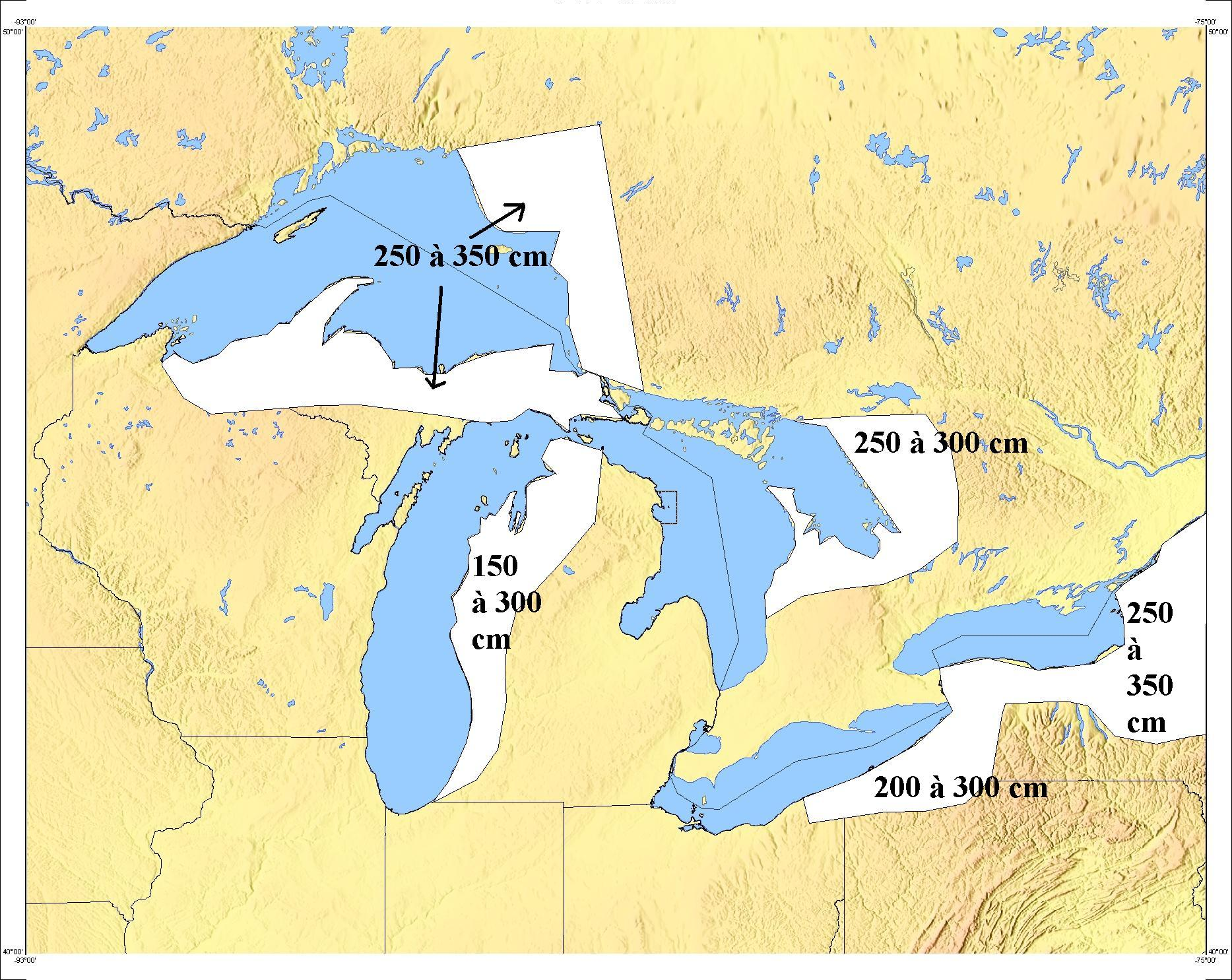
(The Great Lake Snowbelts)
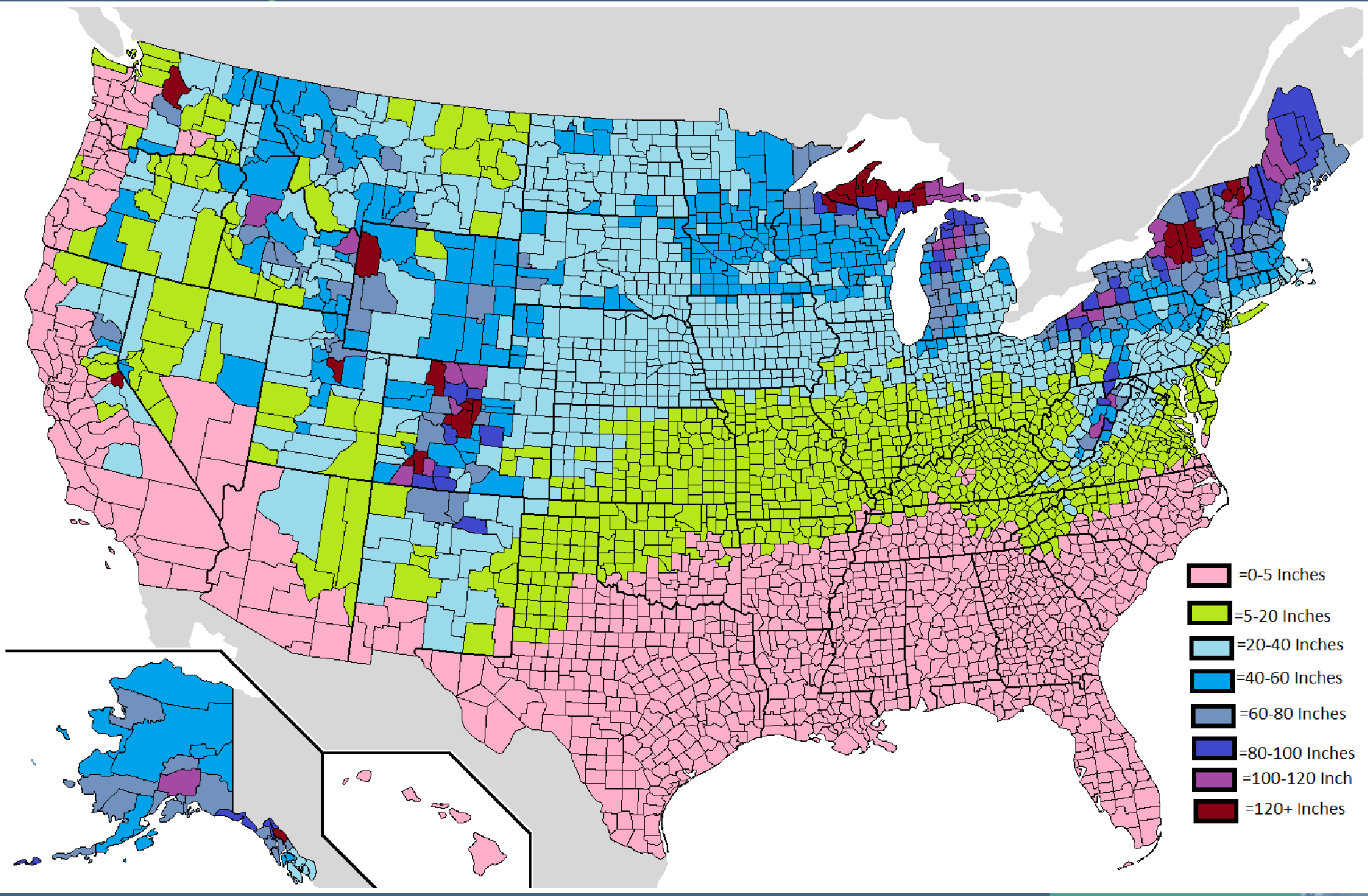
(Source: USA.com; Portacup)
In the map above, which shows average yearly snowfall in the more than 3000 counties of the United States, there are just 29 counties (according to my count) that receive 120+ inches of snow, 30 counties that receive 100-120 inches of snow, 50 counties that receive 80-100 inches of snow, and around 100 counties that receive 60-80 inches of snow.
13 of the 29 with 120+ inches of snow are in the Great Lakes Snowbelts (8 of the remaining 16 counties with 120+ inches of snow are in Colorado). 15 of the 30 counties with 100-120 inches of snow are in the Great Lakes Snowbelts (compared to 5 in Colorado and 5 in Vermont or Maine). 24 of the 50 counties with 80-100 inches are in the Great Lakes Snowbelts (compared to 7 in Colorado, 4 in Alaska, and 9 in Vermont, New Hampshire, or Maine). And about half of the 100 or so counties with 60-80 inches are in states which border the Great Lakes.
As you can see in the maps below, this has had a big impact on urban development within the Great Lakes basin. The largest cities, namely Chicago, Toronto, Detroit, and most of Cleveland-Akron, are not surprisingly located outside of the region's snowbelts. Chicago, for example, gets only a third of the snow on average that Rochester, NY gets in any given year, and a sixth of what cities like Oswego, NY get.


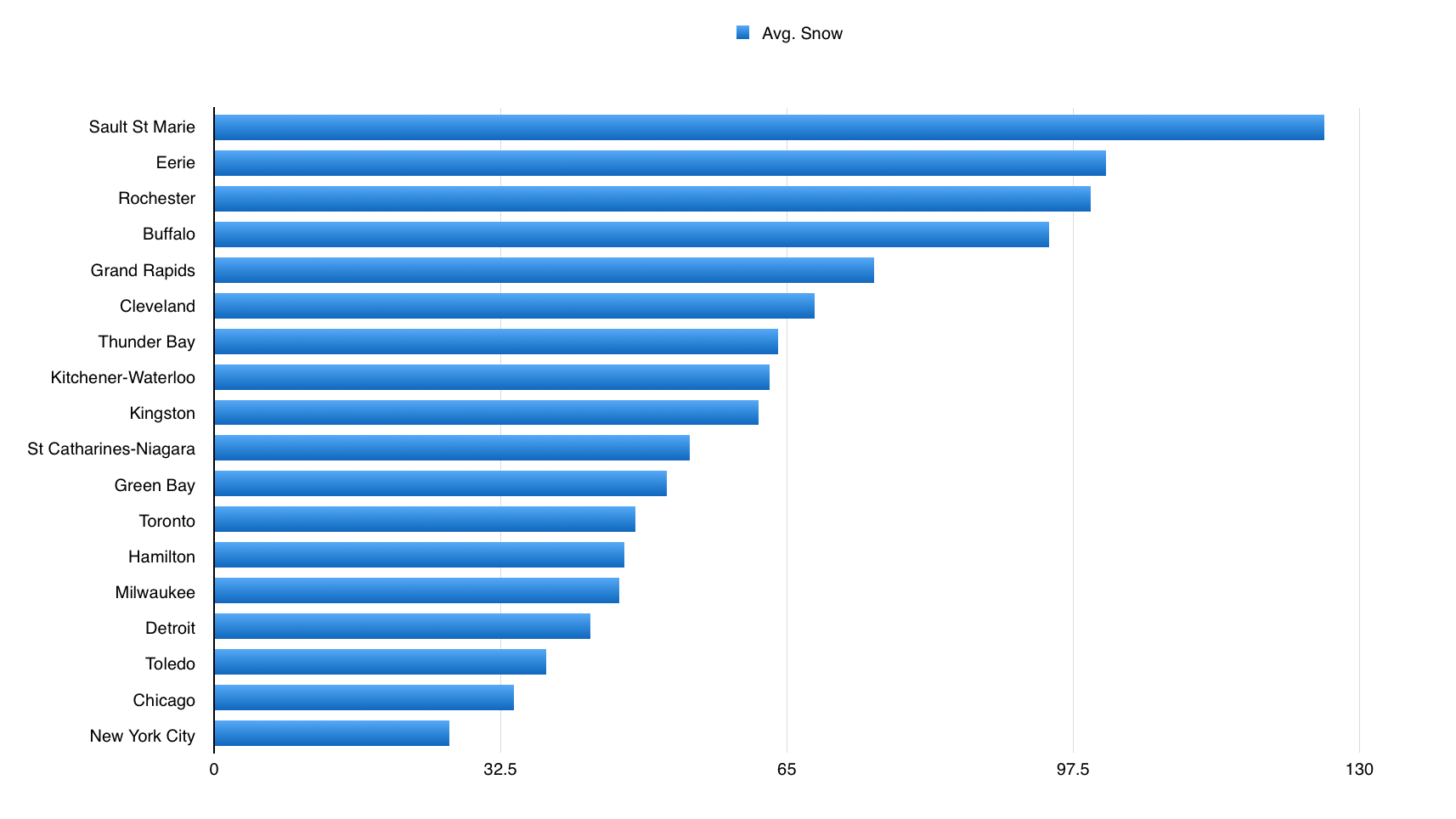
(With the exception of Sault St Marie, each of these cities has a population of at least 100,000. Sault St Marie is the quintessential Great Lakes city, however; it is located around the place where Lake Superior, Lake Huron, and Lake Michigan, the three largest great lakes, converge. It has a population of 75,000 on the Canadian side of the city and 14,000 on the US side. New York City, meanwhile, is obviously not on the Great Lakes, but I included it anyway to show as a comparison)
There are, of course, some notable cities within the Great Lake Snowbelts. Buffalo, for example, which serves as New York state's outlet on Lake Eerie, was the 8th most populous city in the United States in 1900, and the 4th most populous city in the US that did not have an ocean port. (A year later, in 1901, President Mckinley was assassinated in Buffalo at the Pan-American Exposition). This was before the construction of the US's road and rail networks stripped the Eerie Canal, and thus Buffalo, of most of its economic significance. Today Buffalo is estimated to be just the 76th most populous city and the 46th most populous "urban area" in the country. It has recently had one of America's fastest shrinking populations.
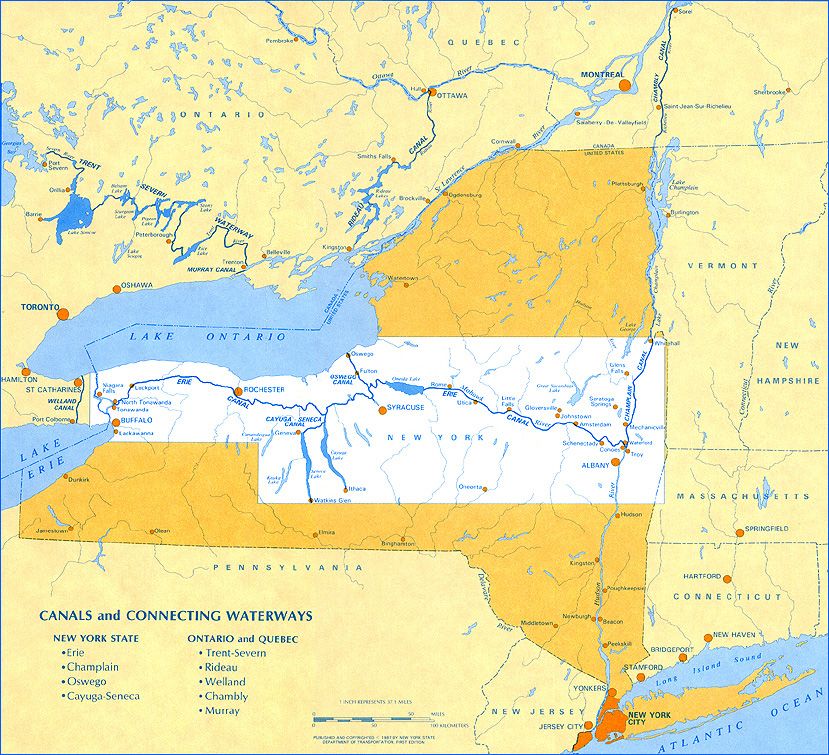
(Eerie Canal)
Eerie, Pennsylvania, meanwhile, was the country's 69th most populous city in the US in 1930. Eerie once served as the meeting place for three separate American railway networks, which used different gauges as one another, before these networks were standardized during the middle of the 19th century. Today Eerie is not even in the top 300 most populous cities in the US and is the 183rd most populous "urban area" in the US. It too has a fast-shrinking population.
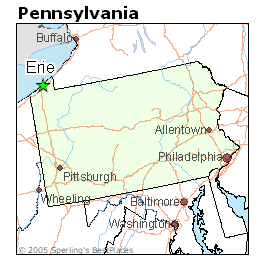
Rochester and Syracuse were the 22nd and 40th most populous cities in the US in 1930, respectively, but are now just the 103rd and 182nd most populous cities now and the 60th and 90th most populous "urban areas". Rochester and Syracuse serve as New York state's outlets on Lake Ontario, just as Buffalo does on Lake Eerie. Rochester is located 11 km inland from Lake Ontario and Syracuse 53 km inland, however, unlike some of the non-snowbelt cities on Lake Ontario like Toronto, Hamilton, and Kingston, which are situated directly on the lake.
Grand Rapids is listed as the 123rd most populous city in the US and the 70th most populous "urban area". It is Michigan's second largest city and serves as the state's chief outlet on Lake Michigan. Like Syracuse, it too is located inland: it is 50 km upriver from the Lake. As you can see in the map below, Grand Rapids is the only place along Lake Michigan's coast where the lake's coastal lowland (the green areas on the map) extends relatively far inland.
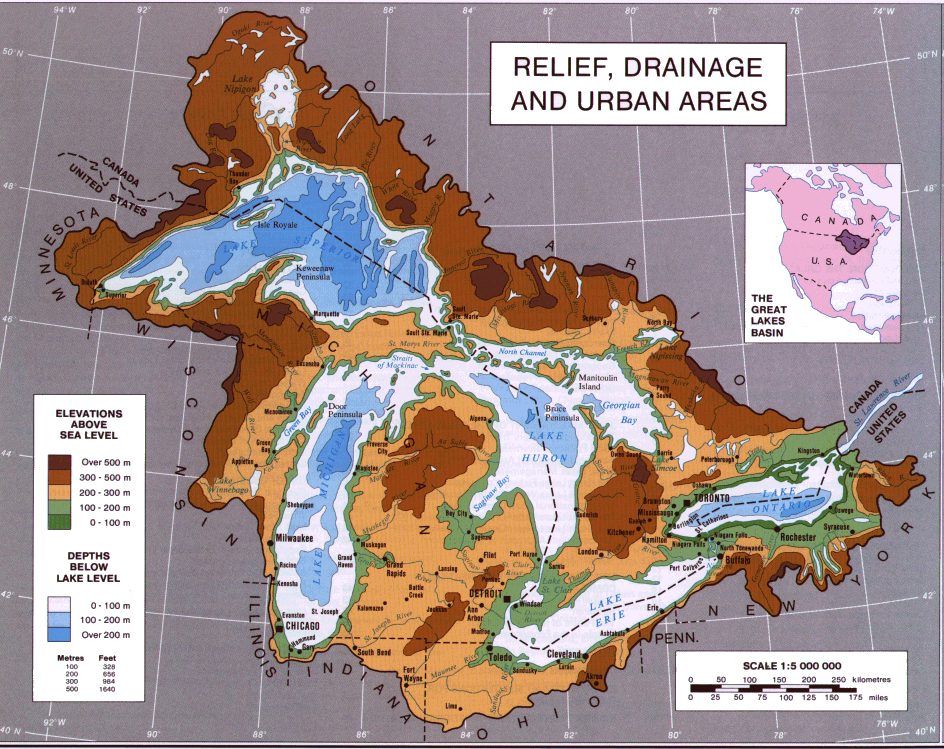
[Note, by the way, how Lake Superior presents challenges to urban development: it is further north than the other Great Lakes, has snowbelts on both its eastern and its southern shores, and it has very narrow coastal plains that are overlooked by 300-500 metre high escarpments. The main Lake Superior port city of Duluth, Minnesota gets more snow (86 inches) than any other city in the state - a lot more snow in most cases. (Minneapolis gets 54 inches). Thunder Bay, which is Canada's primary Lake Superior outlet, gets 64 inches of snow].

(I forgot to add Syracuse, which should be second on this list: it gets 123 inches of snow on average, according to currentresults.com)
Cleveland's numbers on the graph above are somewhat misleading: they are skewed upward because some of Cleveland's suburbs, like Broadview Heights, usually get much more snow than Cleveland proper does.
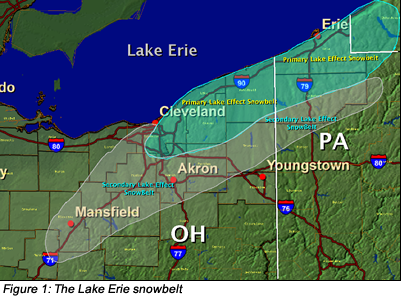
Outside of the big and medium-sized Great Lakes cities, there are places in the Snowbelts that get even more snow. Lake Ontario coastal towns in the area from Oswego (population: 18, 142) to Watertown (population 27,823), get well over 100 inches of snow a year. Marquette in Michigan and Owen Sound in Ontario do too. And even smaller places like Boonville, New York (population 2056), in the foothills of the Adirondacks, and Hancock in Michigan's Upper Peninsula (population 4596) get more than 200 inches on average. According to this source, Hancock is the snowiest city in the United States among cities or towns with at least 1000 residents, with the exception of Valdez, Alaska or Crested Butte, Colorado.

(...assuming you don't get caught in a whiteout)
Why does any of this matter?
The Great Lake Snowbelts have posed challenges for urban development thus far. Buffalo is by far the most populous snowbelt urban area, and even Buffalo is not a big city. And apart from Eerie, Rochester, and Syracuse in the US or London, Barrie, and Sudbury in Ontario, there are no other Great Lake cities that get more than 70 inches of snow a year on average and have populations of at least 100,000. It simply has not made sense to grow a city in a place with so much snow.
Technology, however, could be a game-changer when it comes to dealing with snow and with snowstorms, which could in turn could give a boost to the economies - or real estate values - of this region. Particularly given that this is a region that otherwise has great assets, such as the Great Lakes, and proximity to Manhattan, Toronto, Chicago, and other major North American cities. Indeed even the snow itself can be an asset once its limitations can be overcome. It is beautiful, provides recreation (skiing, cross-country skiing, taboganning, etc.), and can help to prevent forest fires.
One technology that could help the Snowbelt is self-driving snowplows. It makes sense that self-driving snowplows should come into operation even before self-driving cars or trucks do, as snowplows are often in demand overnight, when few other drivers are on the road and labour costs are high. Also, because snowplows drive and work slowly, which means that plowing roads normally tend to be labour-intensive, and that self-driving plows working overnight would probably not be as much as a safety hazard for human drivers as faster self-driving cars might initially be.
Similarly, snow-clearing robots can help clear parking lots, sidewalks, and, most helpfully, rooftops. Rooftop snow can be especially damaging to buildings, and is often difficult, expensive, and time-consuming to clear.
Another technological change is e-commuting and e-commerce. If you do not want to commute to work following a heavy snowfall, you may now work from home instead, or from an office or co-working space near your house. And you may order your groceries directly to your house.
If you do not want to drive while it is snowing or has recently snowed, you may also soon be able to use an app like Uber or Uberpool to get around in a vehicle that can better handle harsh conditions.
And if you are driving, you can use tools like GPS and smarter cars to better handle snow. Today, driving in a road that does not have street lighting while it is snowing can be hugely irritating and dangerous; when you turn your headlights on the light ends up scattering off the snowflakes, making it nearly impossible to see. There is also often snow covering the surface of the road, making it impossible to see the barrier between your lane and the lane for oncoming traffic. You often have to drive extremely slowly, and even then can easily get your car stuck in a snowbank or suffer a car accident.
GPS can help you can quicker emergency response or roadside assistance. And technologists are working on tools to help cars and trucks navigate through heavy snowfall and help drivers to avoid getting into accidents when in rough, wintry conditions. Self-driving trucks travelling overnight could also help get trucks off the road during the daytime, and to save truckers the trouble and danger of having to drive through a snowstorm.
--
Now, a little bit more on the Snowbelt:
Nearly all the Snowbelt are in Ontario, Michigan, or upstate New York. The snowbelts in upstate New York and Eerie, Pennsylvania are strategically located at the "backdoor" to the Boston-to-Washington megacity (which you can see in the map below), and are similarly adjacent to the Toronto-to-Detroit (or, more broadly, the Montreal-to-Chicago) region.
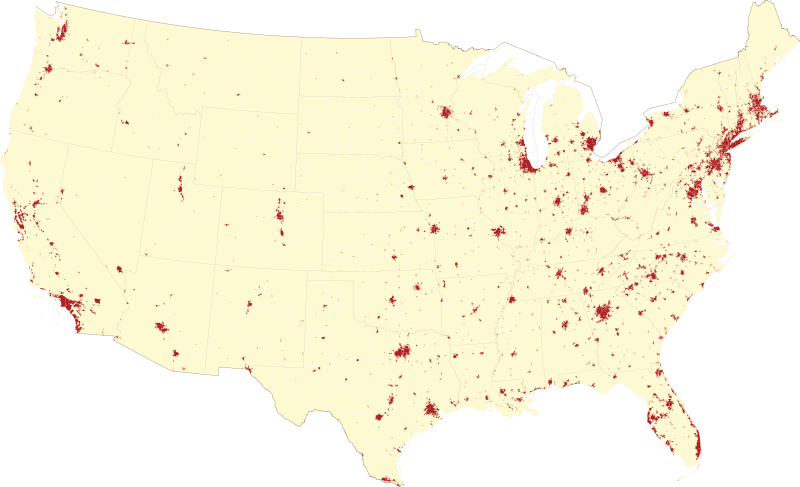
(population density/major urban areas in the US)
According to Accuweather, of the 10 snowiest "major" cities in the world, three are in New York state (Buffalo, Rochester, and Syracuse), three are in Canada (Saguenay in Quebec, St John's in Newfoundland, and Quebec City), and four are in northern Japan (Sapporo, Aomori, Toyama, and Akita). Aomori gets the most by far: 312 inches, compared to second-placed Sapporo which gets "just" 191 inches.
In Canada, unlike the United States, the Great Lakes Snowbelts don't dominate in the snowfall category, since places further north where the weather is colder often get more. French-speaking cities like Quebec City, Saguenay, and Sherbrooke, for example, get more snow than places throughout much of the Great Lake Snowbelts, mainly because they have very cold climates.
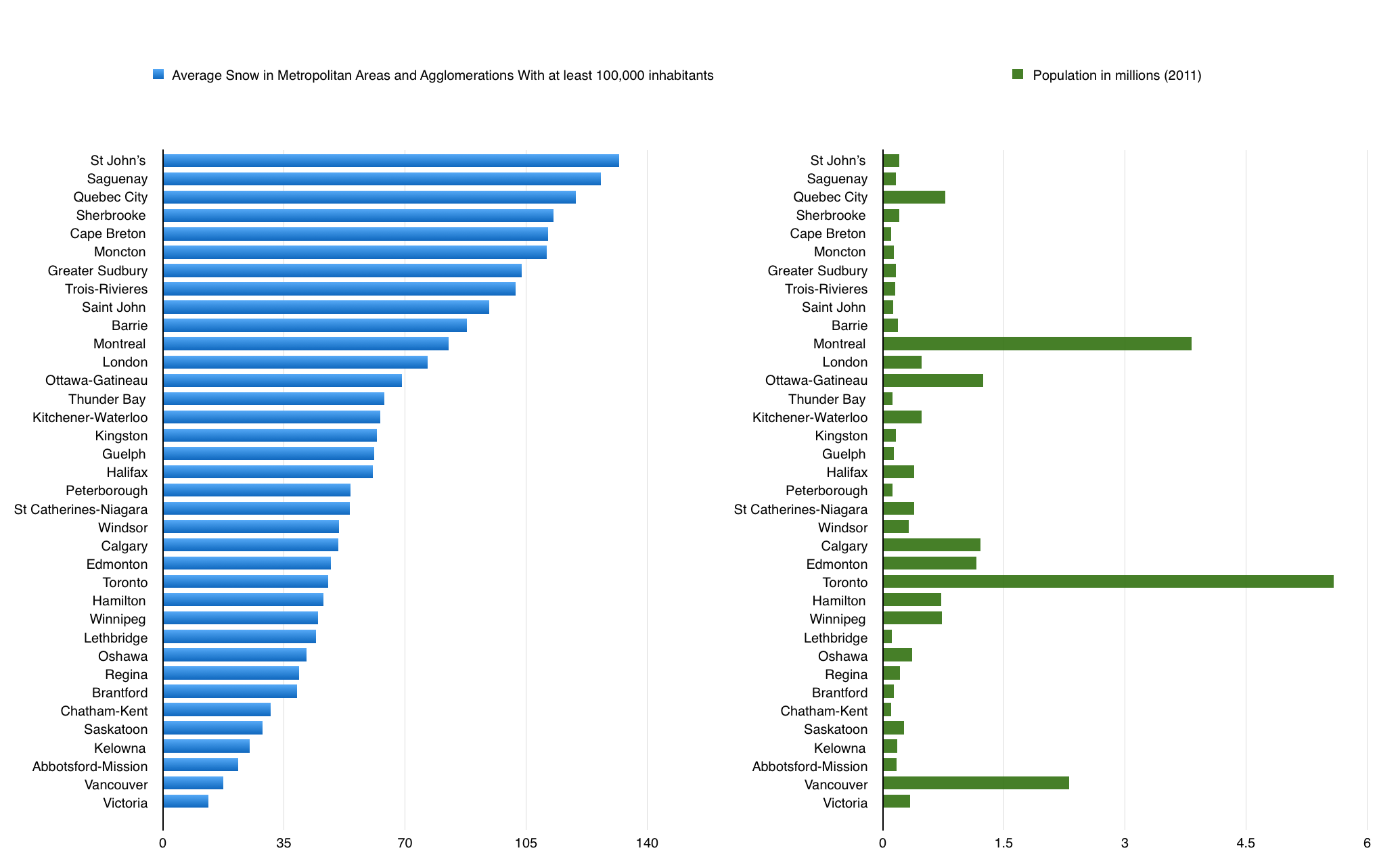
St John's, Moncton, and Cape Breton, on the other hand, which are in Canada's Atlantic Maritime provinces, are actually relatively warm, yet still receive enormous amounts of snow. St. John's, which is the largest and snowiest of these three, is actually one of the warmest cities in Canada outside of British Columbia during the winter; its coldest month is February, when it averages highs of -1 degrees Celsius and lows of -9 degrees Celsius. But in return for this "balmy" winter weather St John's also gets cooler summers than other Canadian cities: its average high in August is just 20 degrees Celsius (68 degrees Farenheit).

Finally, one last thing on Snowbelt snow patterns, from theweatherprediction.com. They can be highly erratic and different to forecast in advance:
"Lake-effect snow has been a forecaster's nightmare from when maps were drawn by hand to the current days of computer predicted models. But no one computer can accurately predict the magnitude or severity of a lake- effect event with the same success as a synoptic event. To describe lake effect snow as temperamental would be a gross understatement. Often arranging itself in rogue bands of heavy snow, lake- effect can stop and start on a dime, and it can dump a foot of snow on one neighborhood and leave the residents of another wondering why the idiot meteorologist keeps breaking into Oprah about some kind of Lake Effect Snow Warning.
And in its unpredictable nature comes its beauty. One of natures precious wintertime treats, just the prospect of lake- effect snow strikes both fear and awe in the hearts of a forecaster. There are, however, trends. Subtle nuances that fade in the background to the untrained eye, but trends nonetheless. If nothing else, these trends offer a faint possibility that maybe, just maybe, Mother Nature may be following a game plan all along.
...Conditions [for lake-effect snow to form] are so difficult to achieve in one given place that lake effect only occurs in four locations on the entire planet: the southeast shoreline of the Hudson Bay, areas just east of the Great Salt Lake in Utah, the northernmost Japanese island of Hokkaido, and of course, the Great Lakes.
Lake snows generate downwind of the Lakes. Sure, lots of people live near a Great Lake, but only a few lucky ones live downwind. Downwind though, is very much a relative term. One day, it takes a west wind. Another, a north wind. But that's just one piece of the puzzle. Pace yourself. Meteorology follows from this point on." Read more here.

(Lake effect snow storm coats car in ice. Yeah, that's about right.)

